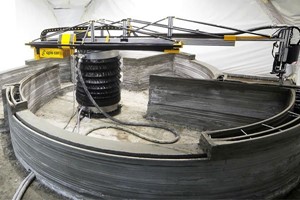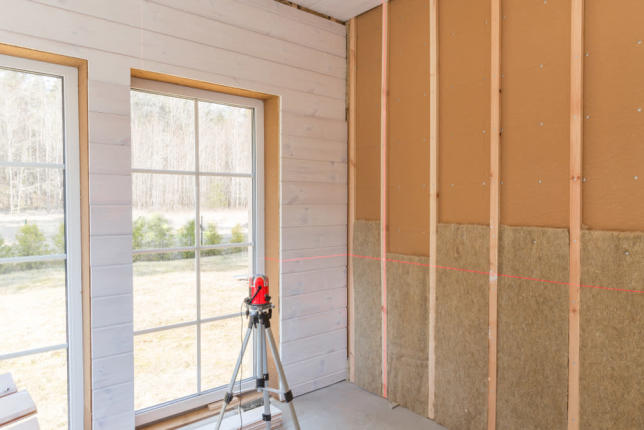The Cadenza concrete spiral staircase, designed by researchers at ETH Zurich in collaboration with ROK Architects, is a significant step forward in sustainable construction techniques. Showcased in the NEST building in Dübendorf, Switzerland, the staircase is part of the STEP2 unit and highlights material-saving and reversible construction approaches. NEST, a shared laboratory run by ETH Zurich and other research institutions like Empa and Eawag, serves as a hub for testing experimental building techniques.
At the core of the Cadenza staircase design is its focus on reducing waste and promoting reusability. The structure consists of 16 identical prefabricated concrete steps, arranged in a helical shape. These steps were all made from a single 3D-printed mould, addressing a key problem in traditional concrete construction— the single-use formwork that often leads to significant material waste. By reusing the mould, the research team managed to create multiple steps while minimizing the amount of excess material produced. This not only cuts down on waste but also makes it easier to reuse or recycle components, a core idea in circular construction.
One of the key innovations of the Cadenza staircase is its modular design. The steps are held together by dry connections, which means they can be easily disassembled and reused in other projects, rather than being demolished after their initial use. This approach contrasts sharply with conventional construction methods, where the majority of building materials are discarded after use. By allowing the structure to be dismantled and reassembled, the researchers have created a model that promotes longevity and adaptability.
In addition to its modularity, the staircase also features an optimized design that uses minimal concrete. Each step has a thickness of just 20 millimeters, resulting in a lightweight yet strong structure. The steps themselves are made from ultra-high-strength steel-fiber-reinforced concrete, and each weighs only 45 kilograms. This represents a weight reduction of around 60 percent compared to traditional concrete steps. As a result, the staircase has an almost skeletal aesthetic, with slender, delicate forms that enhance its visual appeal while maintaining structural integrity.
According to Benjamin Dillenburger, head of ETH Zurich’s Digital Building Technologies, the staircase symbolizes the advantages of digital tools in architecture. "Customised concrete structures are a challenge for conventional formwork," said Dillenburger. "Digital design-to-production frameworks with 3D-printed formwork offer huge advantages for architectural expression, structural performance, and material efficiency."
The researchers opted for 3D-printed formwork instead of printing the stairs directly in concrete. This method, according to research assistant Angela Yoo, provides more flexibility and efficiency. "A compact, reusable set of 3D-printed formwork can be used to repeatedly cast multiple steps," she explained. "This enables the assembly of multiple flights of stairs with a minimal amount of digital fabrication, making it an ideal solution for scalable production of bespoke designs."
The use of 3D-printed formwork also allows for the integration of steel reinforcement, which can be a challenge when directly 3D printing concrete structures. By printing the formwork instead, the team was able to incorporate steel bars without obstructing the manufacturing process. The steps were cast off-site and then lowered into the NEST building by crane, although the design allows for easy assembly in tight spaces without the need for heavy machinery.
Another innovation is the post-tensioning system used to assemble the staircase. Steel alloy cables run through channels in the steps along the spine of the structure. These cables are part of a post-tensioning system, which applies tension only after the steps are in place. This tension is created by heating the cables with a generator, a process that uses "memory steel" to develop strong forces when heated and cooled. This system not only saves space but also simplifies the assembly process. Additionally, it allows for easy disassembly, making the staircase suitable for reuse in other projects.
The Cadenza staircase demonstrates how prefabricated concrete parts can contribute to sustainability in construction. Klaus Einfalt, CEO of SW Umwelttechnik, a fabrication partner on the project, emphasized the benefits: "Their stability, longevity, and recyclability make them an essential factor for a sustainable future in construction."
Since opening in 2016, the NEST building has been a hub for cutting-edge construction research. In addition to the Cadenza staircase, other projects have included the HiRes Concrete Slab ceiling, which incorporates 3D-printed ventilation ducts, and a robotic construction method for timber structures. The building’s modular design allows for experimental units like STEP2 to be installed and dismantled, making it an adaptable space for ongoing research and innovation in sustainable architecture.
By Rima Sabina Aouf













